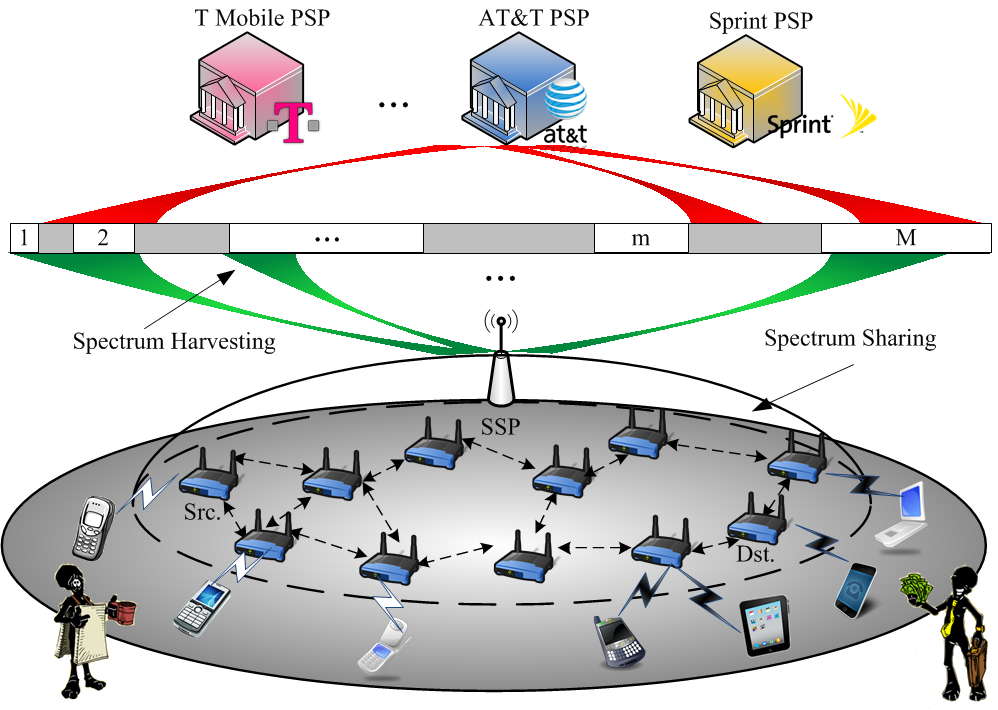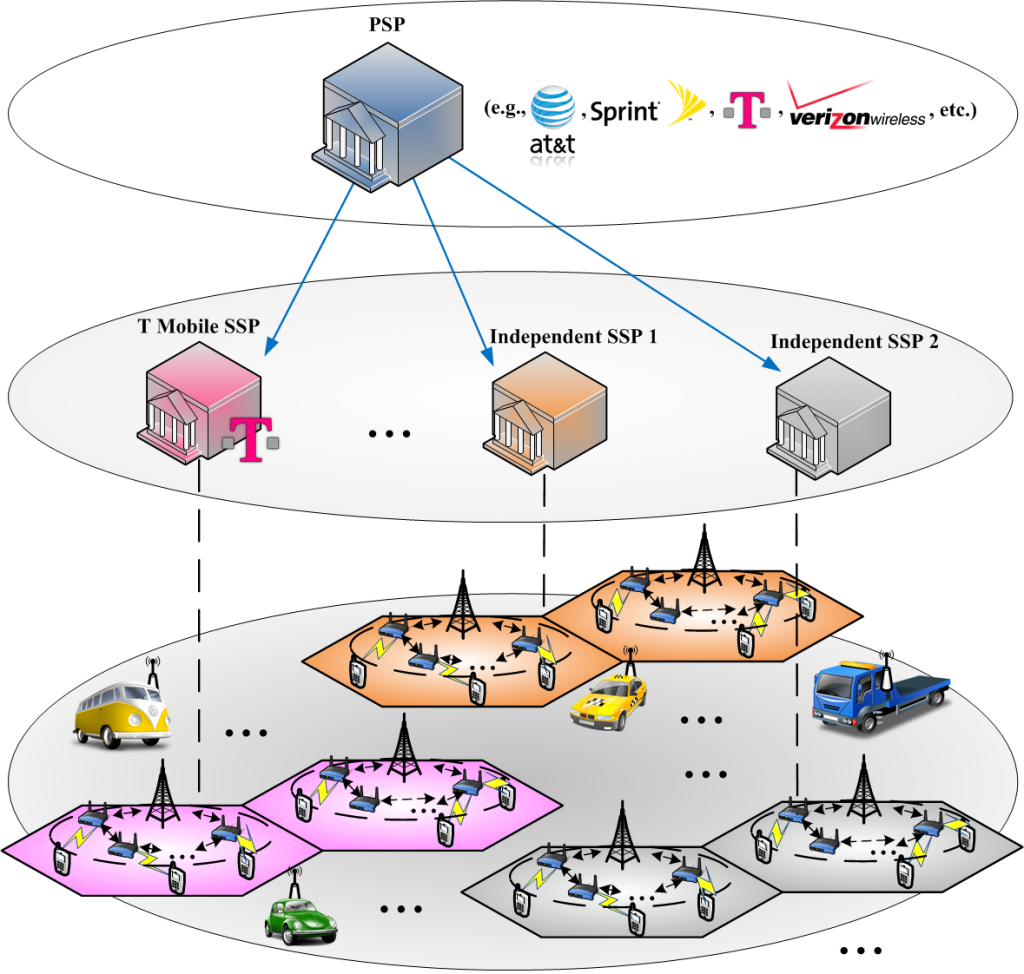 SpecMax: Spectrum Trading and Harvesting Designs for Multi-Hop Communications in CRNs
SpecMax: Spectrum Trading and Harvesting Designs for Multi-Hop Communications in CRNs
The dilemma between wireless services’ booming growth and the unlicensed spectrum’s scarcity has shoved static spectrum allocation off the edge. Cognitive radio (CR) is a revolutionary paradigm which releases spectrum from shackles of authorized licenses, and enables unlicensed secondary users (SUs) to opportunistically access to the under-utilized licensed spectrum. Due to the great economic value of spectrum, CR technology has also promoted many spectrum trading designs in cognitive radio networks (CRNs). Unfortunately, most existing designs rely on the premise that the SUs’ hand-held devices have powerful CR capability, which may not be easily embedded into light-weight small-sized radios of SUs’ devices. Besides, existing designs mainly focus on per-user based spectrum trading for single-hop communications, and lack deep understanding of multi-hop end-to-end service provision. Moreover, the prevalent idea of choosing the best band makes secondary services vulnerable to interruption due to the returns of primary users. Finally, to facilitate spectrum trading, more accurate information of spectrum availability should be provided. Motivated by these facts, this project aims to construct a framework to investigate the spectrum trading in multi-hop CRNs, which includes the study of (1) designing a novel CRN architecture to facilitate the accessing of SUs without CR devices, (2) extending spectrum trading for multi-hop CR communications, (3) harvesting spectrum under spectrum uncertainty, and (4) constructing a fine-grained mobile spectrum map. The results of this project can advance the state of the art in spectrum trading designs and enrich the scientific knowledge of network designs and network economics.
 CAREER: SpecMax: Spectrum Trading and Harvesting Designs for Multi-Hop Communications in Cognitive Radio Networks (CNS-1350230), PI. National Science Foundation, August 1, 2014 – July 31, 2019.
CAREER: SpecMax: Spectrum Trading and Harvesting Designs for Multi-Hop Communications in Cognitive Radio Networks (CNS-1350230), PI. National Science Foundation, August 1, 2014 – July 31, 2019.
 Cognitive Mesh: Making Cellular Networks More Flexible
Cognitive Mesh: Making Cellular Networks More Flexible
Innovative use of wireless devices such as smartphones in various mobile applications has exacerbated the congestion over cellular spectrum. On the other hand, many licensed spectrum blocks are left unused. Although cognitive radios (CR) technology has emerged as an enabler for unlicensed users to opportunistically access the unused licensed spectrum, most previous works commonly assume that each user is equipped with a CR which can operate across a wide range of spectrum. This may be possible in theory, but may not be practical for light-weight devices such as cell phones. How to effectively utilize the CR technology to build more flexible networks so that even non-CR capable devices can benefit from the opportunistic access to the unused spectrum is therefore in dire need. In this project, we propose a novel cognitive mesh assisted cellular network (CMCN) and investigate: 1) the architectural design of CMCN so that unoccupied licensed spectrum can be efficiently utilized and non-cognitive cellular devices can benefit from the CR technology, 2) spectrum and energy efficient CR mesh router placement under uncertain spectrum availability, 3) how to construct a fine-grained spectrum map to facilitate efficient spectrum allocation and intelligent traffic delivery, and 4) experimental validation and implementation for the proposed design. The research outcome provides a viable solution to the spectrum congestion in cellular systems. Moreover, with this flexible architecture, telecommunication industries can be rejuvenated with new innovations, leading to further development of cellular networks with high capacity and better support of new applications such as mobile healthcare, which has significant impact on individuals’ lives and further provides greater opportunities for job creation and economic growth.
